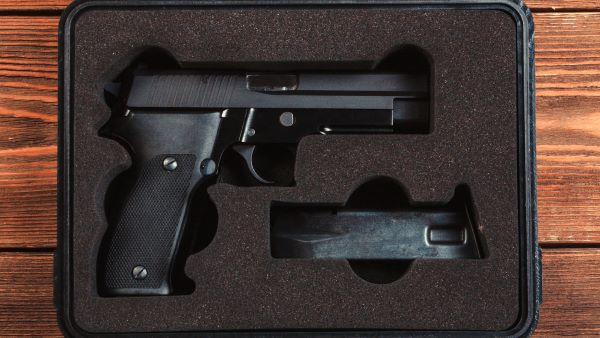How Do I Transfer My Gun to Another State?
One of the most common questions we hear from gun owners is: “How do I transfer my gun to another state?” Because what’s legal in one place may be restricted or even prohibited in another, understanding how to transport firearms is a major concern for a lot of people about to make a long-distance move. This blog walks you through the process, explaining Federal guidelines, safe travel tips, and the different ways to bring your gun with you when you move.

How to Transport Guns When Moving
Gun owners transferring firearms between states are covered by the Firearm Owners’ Protection Act, which guarantees the right of ordinary citizens to transport guns from one state to another ‒ as long as it’s legal for them to possess the gun in both states. It also sets clear standards for public safety, requiring every owner to take basic precautions while conveying firearms in their vehicles. To comply with the law, your guns:
- Must be unloaded. There cannot even be one round in the chamber.
- Must be inaccessible. Store them in your trunk or a non visible section of your car where you can’t reach them.
- Must be stored in a lockbox. The container must be hard-sided and lockable, to prevent unauthorized persons from gaining access to it.
If you are bringing ammunition with you, it must be stored in a separate, locked container. Keep in mind that the law only protects you while you’re traveling. Though you’re allowed to make short stops for food and gas, if you decide to spend the night in a state, your guns are subject to its laws. To avoid legal headaches, research the regulations in states you’ll be passing through, to make sure you don’t accidentally violate their gun statutes.
Other Ways to Transfer Guns
For gun owners who would prefer not to transport their guns themselves, there are several other options. Most professional moving companies will accept firearms, provided they're unloaded and locked in hard-sided containers. Some movers even specialize in firearm transfers. However, no reputable mover will transport ammunition, due to its explosive nature. Let the moving company know you own guns before you hire them, and ask about their firearm policy if it isn’t mentioned on their website.
The United States Postal Service will also ship rifles and shotguns as long as they’re:
- Unloaded
- Packed in a plain, unmarked box
- Declared as a firearm at the post office counter
- Addressed to a dealer, business, or individual with a Federal Firearm License
FedEx and UPS will ship rifles, shotguns, and handguns, but only if they’re addressed to a Federal Firearm Licensee (FFL). Gun owners are required to deliver their firearms to a staffed location in a locked, hard-sided container with no markings or labels indicating the package contains weapons of any kind.
Before shipping, you’ll need to contact the FFL and request a copy of their license, which you’ll present to the staff, along with a copy of your ID. Before packaging your firearms, always write down their serial numbers. You may want to purchase insurance as well, to protect your items during transit. Neither FedEx or the United States Postal Service accepts ammunition, but UPS does, with some restrictions.
You can also contact an FFL in your community and ask them to ship your firearms directly to an FFL in your new city, such as a gun shop, gunsmith, or pawn broker. The FFL may be able to look up the recipient’s license on their own, or they may ask you to provide a copy of it, along with your identification.
Flying with Firearms
If you’re flying to your new home, you can transport your gun as checked luggage. According to TSA guidelines, it’s legal as long as:
- You’re traveling within the domestic United States
- You’re old enough to possess the weapon in the state you’re flying from and flying to
- It’s legal for you to own the gun in both locations
- The gun is unloaded and stored in a hard-sided case
- You declare the gun during check-in
When you arrive at the airport, tell the counter agent that you need to declare a firearm in your checked luggage. You’ll have to fill out a declaration form and place it in the gun case, beside your weapon. Afterwards, a TSA agent will arrive to inspect your firearm. Once the inspection is over, re-lock the case, but don’t share the key or combination with TSA or airline staff at any time.
This ensures you’re the only one who can access the firearm. Some airlines allow you to check ammunition as well, though only if it's boxed in a fiber, wood, or metal container. Call your airline and ask about their policy a few days before your flight, to ensure everything goes smoothly during check-in.
Long Distance Moving Services
Moving is complicated, but we make it simple. Whether you need help with planning, packing, shipping, or storage ‒ our full service moving teams streamline your move from start to finish. No matter how far you’re going or what you’re shipping, we have the skills, knowledge, and resources to get you there safely. Contact us today for a free quote!